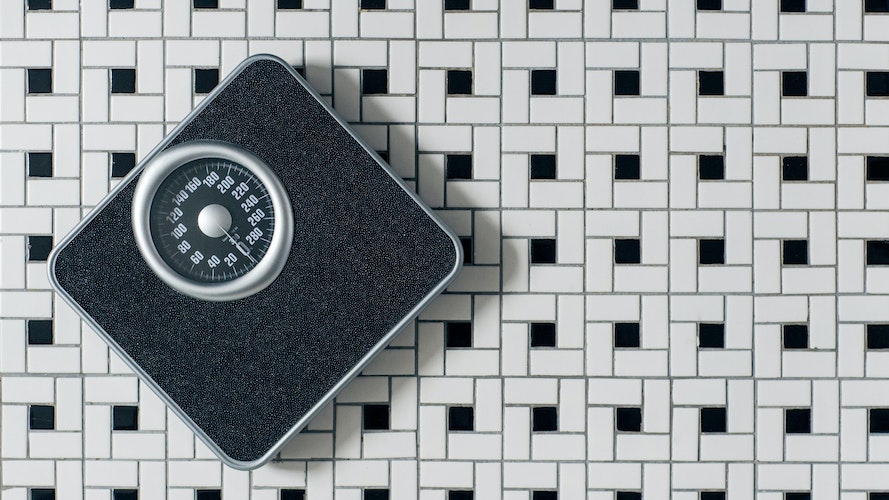Why Weight Fluctuations Could Be to Blame For Your Skin Laxity
Thespotlyte | August 03, 23

It’s a sad but true fact that the United States is facing an obesity epidemic, and many people are simply working on not being another casualty. A Centers for Disease Controlsm National Health and Nutrition Examination SurveyTM reported that 49 percent of American adults reported trying to lose weight in the prior 12 months — yet, according to The American Journal of Clinical Nutrition®, only about 20 percent achieve long-term weight loss (as defined by losing at least 10 percent of their initial body weight and maintaining that loss for at least one year). These statistics prove that millions of Americans experience weight fluctuations. If you’re one of them, you know how frustrating it can be to manage. It’s not just dealing with multiple wardrobes across different sizes — it’s also seeing all the changes to your body over time with weight gain and loss, including how it affects your face.
“Although there are differences from person to person, when we lose weight and gain it back, it doesn’t necessarily go to the same place,” warns Kenneth Howe, MD, board-certified dermatologist at New York City’s Wexler Dermatology℠. “It [may] reappear where we don’t want it, rather than where we do.” It goes without saying that our weight plays a role in overall health, but here’s the lowdown on the impact that both losing and gaining fat can have on the appearance of our faces.
What happens when you lose weight?
There’s no better feeling than slipping into your favorite “skinny” jeans and zipping them up with ease — and losing as few as five pounds can make a profound difference in how your clothes fit. “Unfortunately, though, [many] people don’t want to lose weight in their face because it [may] make them look older,” Dr. Howe says.
Losing that facial fat can lead to sagging skin, especially if you’ve experienced significant weight loss. It’s often most visible around the cheekbones and midface. “When dieting leads to the loss of the fat pads that prop up the skin, the result is going to be sagging,” says Emmy Graber, MD, board-certified dermatologist and president of the Dermatology Institute of Boston℠. Furthermore, the natural changes that occur in our skin with age can exacerbate that sagging, slack look. “Less collagen, thinner skin, and loss of elasticity contribute to skin that is more stretched out, and has a harder time bouncing back,” Dr. Howe adds.
How can one improve the effects of facial fat loss?
Fortunately, it’s rather easy to restore facial volume that has been diminished due to weight loss. As we mentioned, one of the areas that are most visibly affected by fat loss are the cheeks — which just happen to be places that can be treated with injectable fillers. “Today’s hyaluronic acid injectable fillers allow us to do what we once could only do with fat,” Dr. Howe says. “By replenishing underlying [volume], these products can also help [reduce the look of] sagging for up to two years,” Dr. Graber adds. Talk to your licensed provider to see if you are a candidate for this treatment.
[Editor’s note: Injectable filler is a temporary treatment that adds volume to areas of the face such as the lips, cheeks, and laugh lines. Like any medical treatment, it has potential risks and side effects. Be sure to talk to a licensed provider to see if it’s right for you. Have more questions? Chat with our team of trained aesthetic specialists now.]
If you currently use fillers and are curious as to how they will look as your weight fluctuates, talk to your provider and let him or her advise you. Dr. Graber believes fillers can be used to temporarily address concerns of volume loss, and can be adjusted gradually to address any volume-related facial changes that may arise down the line — whether they’re related to your weight or simply inevitable volume loss.
Likewise, patients who experience skin laxity after weight loss may benefit from skin-tightening treatments, such as ultrasound-based Ultherapy®, radiofrequency-driven Thermage®, and even microneedling. All three of these options stimulate your skin at a deep level to produce more collagen, thus helping to firm and tighten any sagging. (Of course, these can also be used to address facial sagging caused by dramatic weight loss.)
What happens when you gain weight?
While you may not enjoy most of the side effects of weight gain, there’s a chance you may like how it makes your face look — at least if it’s just the addition of a few pounds here or there. “Weight gain usually makes people look younger because their face is fuller,” points out Dr. Graber. However, once we get into the territory of significant weight gain, it can start to negatively affect your appearance, including pouches under the eyes and loss of jawline definition.
Can you prevent the facial changes associated with weight fluctuations?
Unfortunately, we can’t control where we gain or lose fat, which you already know if you’ve ever tried to “spot treat” a certain body part through diet or exercise. When you lose weight, fat is lost from the entire body as a whole — not specific body parts. That said, Dr. Howe reminds us that you can influence your actual skin. “It’s important to maintain skin health with daily sunscreen, a high-quality vitamin C antioxidant serum, and a good retinoid,” he says. These three products will protect your skin from sun damage and free radicals, which can result in premature aging (including sagging!), and help smooth away fine lines.
[Editor’s note: Retinol shouldn’t be used by women who are pregnant, considering getting pregnant, or nursing. Please consult with your doctor before use.]






